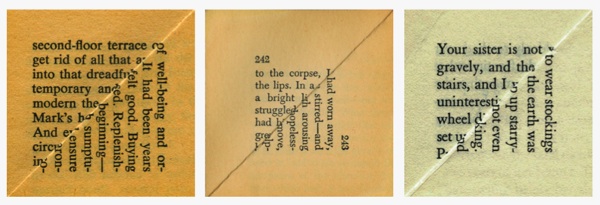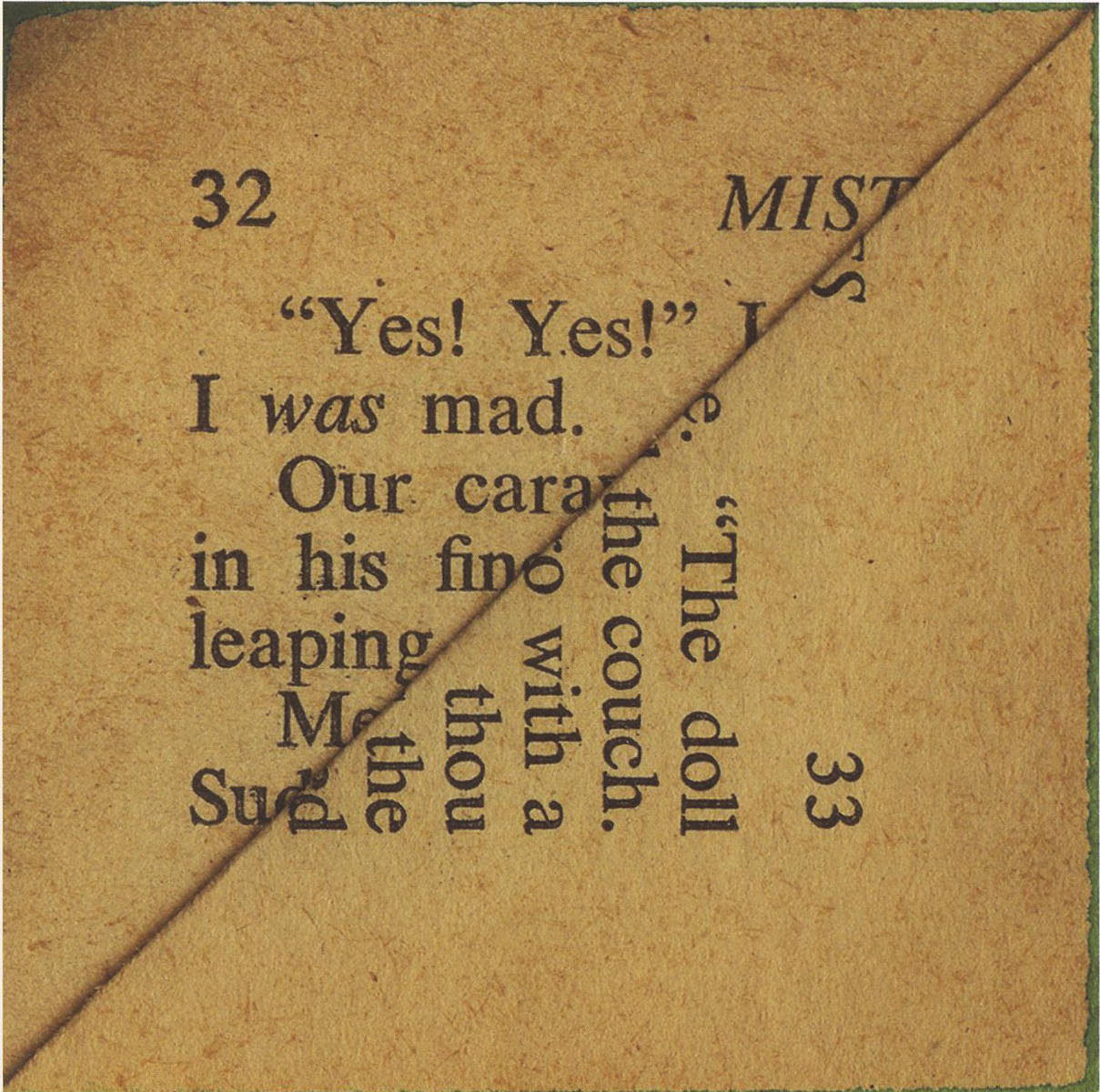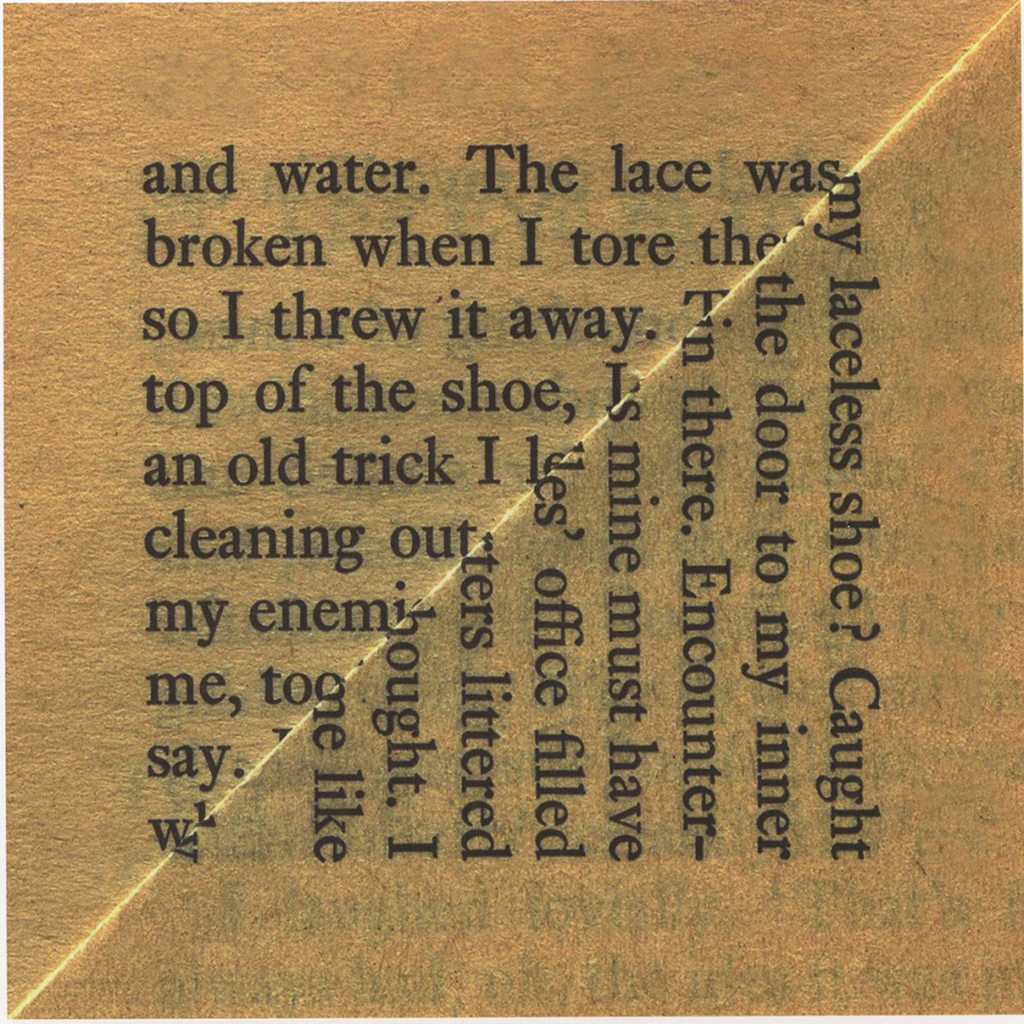In a 1997 interview, Jacques Derrida turned his attention to the apparently banal subject of “paper”:
Exile was already there in paper [. . .] The pathos of paper already obeys a law of the genre — but why not yield to it? It is an inconsolable nostalgia for the book [. . .] It is a nostalgia for paper before the reproducible “impression,” for paper once virginal, both sensitive and impassive, both friendly and resistant [. . .] a nostalgia for the color or weight, the thickness and the resistance of a sheet — its folds, the back of its recto-verso, the fantasies of contact, caress, of intimacy, resistance, or promise: the infinite desire of the copyist, the cult of calligraphy, an ambiguous love for the scarcity of writing, a fascination for the word incorporated in paper.
The nostalgia for paper Derrida describes here seems, at first glance, familiar, and indeed might be taken to be a unique feature of our historical moment. The book is dying, the story goes, and we have accordingly gone into mourning for paper: its homely heft, smell, and volume displaced by the uncanny glow of proliferating screens. Exiled from paper, we are given to understand, we drift haplessly in an endless sea of frigid, luminous pixels. Indeed, anyone who has attended to the discussions surrounding, for instance, the advent of the e-reader or the impending demise of the print periodical may have long since come to view such nostalgia as retrograde: if paper’s time has come, why not let it die? And surely, melancholic pining can’t be really taken seriously as a counterargument to the march of technological progress — times change and media change along with them. Even those of us who still use and love books and newspapers (and we will probably be around for a while) must find it hard to avoid viewing the nostalgic narrative about paper (which holds that with the loss of paper we lose part of our souls) as anything other than an instance of soppy Ludditism.
Derrida is also suspicious of the nostalgia that attends the death of paper, but hardly for techno-positivist reasons: “Exile was already there in paper.” This cryptic statement bears unpacking. Paper has, for centuries, been the primary substrate of communication in literate Western societies, the medium via which novels are written, laws recorded, letters delivered, and taxes filed. The histories of modernity’s political and economic structures, systems of scientific and humanistic knowledge, and networks of interpersonal communication can all be imagined as stories about paper, about its production, inscription, circulation, and above all its endless accumulation (Derrida, I think, is not the only one who has “suffer[ed], to the point of suffocation, from too much paper”). Yet paper — paper itself, tightly woven fibers of wood pulp (previously cotton or linen rags) pressed into thin, delicate layers — tends to become invisible, rendered nonexistent by its very omnipresence. Paper is supposed to be the mere vehicle for thought, but somehow comes to seem as ephemeral and insubstantial as the thoughts it carries. Despite its banal materiality, paper is, for example, the symbol of stubborn resistance to reality (“it works on paper, but . . .”) and an emblem for a certain kind of simulacrum (“paper tiger”); indeed, an entire class of papers, though apparently extant in the world of things, are designated as having disappeared (“ephemera”).
For Derrida, therefore, the desire to get close to paper — to handle or smell it, to arrange and rearrange it, to admire its quality or examine its imperfections, to save it even when one no longer has any use for it — is always elegiac, always expresses a longing to reencounter the body of paper — a body sacrificed upon its transformation into pure medium. The “exile” of paper from its body, and the nostalgia that desires to recuperate this exile, is for Derrida not just a product of the historical demise of paper but an integral part of what it means to live in a culture that thinks, so to speak, on paper. Nevertheless, we need not stray too far from Derrida to suggest that the seismic shifts we are currently undergoing in how we store and transmit information heighten the drama of paper’s simultaneous materiality and immateriality.
The above analysis is of course wildly reductionist: paper has always coexisted and interacted in complex ways with different media, and will no doubt continue to do so for some time. Yet poems and pieces of visual art that attempt to come to terms with paper — with its superabundance and with its spectrality — have had a quiet but continuous presence in our cultural imaginary for at least the past century. Kurt Schwitter’s collages, Robert Rauschenberg’s combines, Dieter Roth’s artist’s books, the Fluxus mail-art movement, Mark Bradford’s “paintings,” Anne Carson’s Nox, Jonathan Safran Foer’s Tree of Codes, Derrida’s own Glas, and even the work of the virtuoso bibliographer Randall McCleod all, in their own ways, try to make some sense of the unending deluge of paper that is, or was until very recently, an integral part of what it means to live in a late-capitalist society. But the most enduringly interesting meditations on paper, to my sensibilities, are always more than acts of mourning or expressions of nostalgia (nostalgia for a mythical past before paper, for the touch of the writerly hand effaced by the hollow “abstraction” of print, or for the sensuous materiality of paper itself). Below, I’ll look at recent work by Erica Baum and Susan Howe to consider what happens when poetry wants to get close to paper — to elegize not only the apparent impending disappearance of paper but also its ubiquitous disappearance beneath the marks made on it and the uses it is put to. I understand these works to be exceptional, however, not just for their aesthetic virtuosity but also for the ambivalence of their elegies for paper, their willingness to be seduced by the immense power of print even as they mourn the body of paper that it sacrifices.
A great deal of ink has already been spilled about Erica Baum’s recent collection of photographs, Dog Ear, but Baum’s photos work through the aesthetic perils of paper-nostalgia with such exquisite deftness that it seems worthwhile to revisit them. Dog Ear contains 24 close-up color photos, shot with crisp uniformity, of carefully dog-eared pages in old books, with fragments of text from two facing pages running horizontally and vertically and meeting in a diagonal crease. This trick creates clusters of laconic statements that intercept one another both spatially and textually; “Examined,” for example, reads (or “reads;” there is no real way to adequately transcribe the text here):
moves a pile / ad examined // the materi / t jammed // nothing / on was // more / ly” // b
Baum is, according to most profiles, a photographer and not a poet, but I’m not sure I buy it: the work in Dog Ear seamlessly integrates process, visual poetics, fragmentation, and the use of found texts, four of the major currents in the past half-century of avante-garde poetry. (Baum’s other work, much of which is now on ubuweb, includes close-up shots of indexes, card catalogue entries, and most recently, player-piano rolls.) Kenneth Goldsmith and Béatrice Gross, who provide an introduction and a post-script to the print version of Dog Ear, say more or less as much, Goldsmith leaning heavily on the multiple paths of reading that Baum’s deceptively simple constructions make available, and Gross dwelling beautifully on Baum’s appropriation of the quotidian practice of dog-earring, considering the fold as both “method and motif.”
One aspect of Dog Ear that Goldsmith and Gross don’t dwell on is its preoccupation with paper: the photos put us into a position of almost stifling proximity with the books that are their subjects, allowing us to see the grain of the paper, its discolorations (Derrida, in the interview cited above, declares “the color of paper” to be “a vast subject”) and stray fibers, and to imagine a certain tactile sensuality in the act of turning down the corner of a page. Yet the photos interdict the very desire for closeness to paper that generates them: as photos of paper printed on paper, they function according to the logic of “mechanical reproduction” that inheres in the photographic form, spectralizing the particular materiality of their subjects. One piece of paper is not just like any another, the photos seem to insist; yet the very possibility of reproducing the photos on different yet interchangeable pieces of paper ironizes this insistence. The same can be said of the texts produced by Baum’s dog ears. The graphic and semantic dissonances that result from the collision of different lines of type at each photo’s central fold are untranscribable, as are the minute blotches and imperfections that the photos make visible, if one looks carefully enough, in the type itself. Yet letters on a page are still letters on a page, and remain legible as such even once Baum’s photos have reminded us that we are not looking at ink on paper and not a “text.” In this way, Dog Ear seduces us with what Derrida calls “fantasies of contact,” simultaneously cultivating and interdicting a desire for closeness to printed words and the books that bear them.
By some fortuitous trick of the camera, the creases in many if not most of Baum’s photos appear slightly luminous, like ethereal thresholds between two texts rather than permanent disfigurations of paper. So convincing is this illusion that it is easy to forget that the fold is not where the text ends but rather where it disappears. “Mad” is an exception to the rule: along the line where the crease divides the two pages, swallowing part of the “T” in the word “MIST” as well as an “I” that returns below as a declaration of madness, a sliver of shadow brings the curvature of the paper into relief. The hint of three-dimensionality introduced into the image by the shadow is enough to make us imagine the heft, modest but not nonexistent, of the page in one’s hand, and the resistance it would offer to the act of folding. It is also enough to remind us that the intercepted “I” finds its completion on the verso side of the underlying leaf. Each of Baum’s photos, in fact, show us only fragments from a comparatively vast continuum of text printed on the hidden side of each page (and if you think about it, pages, even unfolded, always have at least one hidden side). The crease, usually a radiant barrier but occasionally, as in “Mad,” betraying itself as simply a crease, violently intercepts the continuity of texts only to dramatize their hidden abundance.
In fact, the proliferation of invisible text beyond the threshold of the crease becomes faintly perceptible when the books photographed are either old enough or cheap enough to be printed on slightly translucent paper. In “Laceless,” for example, at least three layers of text are visible: that printed on the visible surface of the page, its counterpart on the recto side, and, faintly, the text on the verso side of the previous leaf. It is thus tempting these to call the image a palimpsest. But this isn’t quite right: the palimpsest is about the persistence and eventual decay into illegibility of old layers beneath new ones, while Baum’s photos are concerned not so much with residuality as with simultaneity. Baum’s acts of folding cause texts to encounter themselves, extracting multiple moments from a continuous text and folding them, spatially and temporally, inward on one another. “Concrete” operations performed on books and “abstract” operations performed on texts thus converge on one another in the act of dog-earring. And it is worthwhile to remember that the dog ear is, first and foremost, a memory technique, preserving a favorite passage or recording progress through a book. Like note-taking and finger-counting, it is a trick for the extension of one’s mind into the matter that adjoins it, a transformation of a physical object into a mental one. Yet Baum’s images seem to be interested not so much in creating portraits of individual moments in individual minds as in registering the graphic, semantic, and visual dissonances that are the unintended outcomes of technically-extended acts of memory.
Thus, Baum’s photos stage complex intra-textual interactions which, one is led to think, are always going on whenever the pages of books meet. Yet these interactions never rise beyond the level of quasi-legibility. In “Laceless,” two layers of miasmic text, running both vertically and horizontally, intersect each other beneath the surface of the visible page, yet only a single word (“That’s”) is legible. These hazy over-writings straddle the gap between legibility and illegibility, word and visual texture, and it is only the peculiar stifled ductility inherent in the paper medium that allows them to come to light. Paper’s relation to its underside, in images like “Laceless,” is inextricably ambivalent: neither opaque nor transparent, paper bears meaning but also screens it from view, acts as a pure surface of inscription but also as a filmy membrane through which invisible surfaces can be glimpsed. And the fold that produces these effects, in bringing to light the acts of showing and concealing that inhere in the paper medium, recuperates the material solidity of paper even as it absorbs it within the procedural logic that governs Dog Ear. Baum’s fold is not just the threshold beyond which text disappears into the dark interregnum between pages, or the compromised boundary between a remembering individual and the physical object that extends their memory, but also the moment, graphically embodied, at which ink on paper begins to dissolve into something slightly less than ideal but slightly more than corporeal.
In their simultaneous use of paper as surface and threshold, Baum’s photos recall Susan Howe’s 2003 book-length poem The Midnight. A toweringly complex work that intersperses laconic, difficult verse with prose commentary on subjects as diverse as Howe’s mother (the Irish-American actress Mary Manning), the landscape designer Frederick Law Olmsted, the rust-belt architecture of Buffalo, New York, and a visit to Harvard’s Houghton Library to look at Emily Dickinson’s papers, The Midnight cannot be discussed with anything resembling completeness here. So bewildering is the poem that Marjorie Perloff devotes an entire chapter to it in her Unoriginal Genius without exhausting its depths, and with only secondary attention to the enigmatic photographs included with the text, which will be my primary concern here.
Anticipating Baum’s fascination with paper as a permeable threshold, The Midnight is concerned in large part with 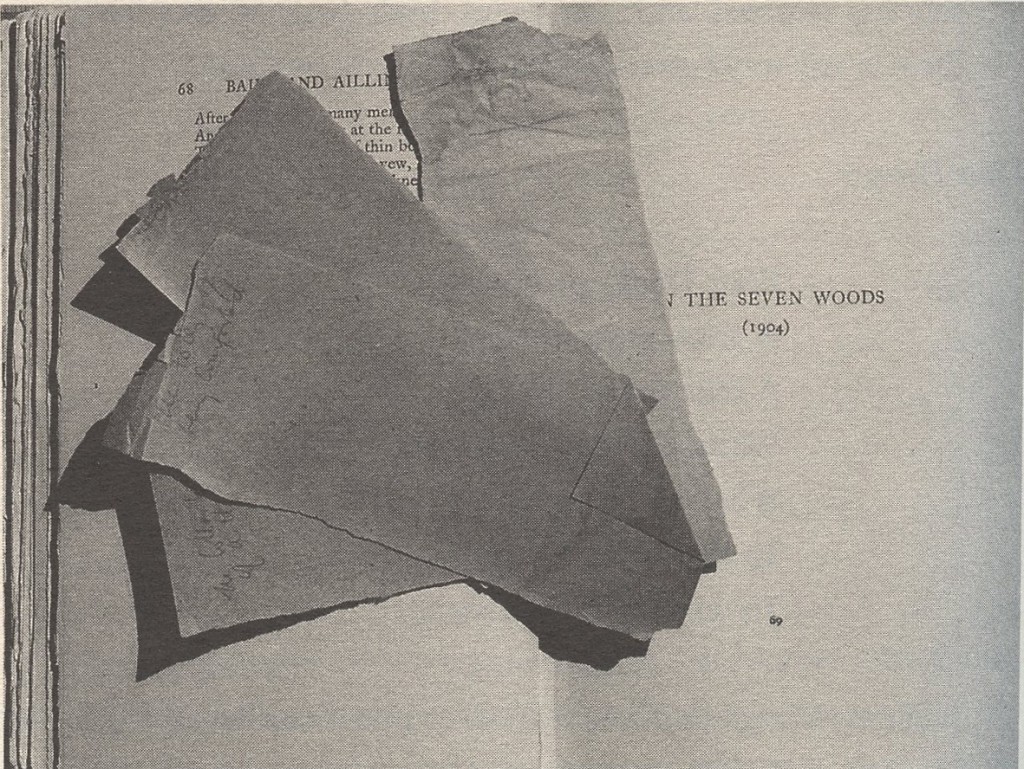 interleaves, bed hangings, curtains, and other diaphanous membranes. The book opens with two photos of the title page of an old edition of Robert Louis Stevenson’s The Master of Ballantrae: one is taken through the translucent interleaf (a sheet of tissue paper tipped in between the title page and frontispiece in order to keep ink from seeping between them); the other is a mirror image of its companion. These two photos are printed on both sides of one page to create the effect of two interleaves enclosing a disembodied text. Thus, Howe gives us two views of a piece of paper, neither of which records the surface of the paper itself, one of which adopts a perspective that doesn’t exist within the physical architecture of the book, and both of which blur the title page’s text to the point of semi-legibility. It is as if the title page itself has been dissolved by its protective membrane, leaving behind only the impressions stamped into it. Of course, as impressions without surface or substrate, the characters on the title page are, strictly speaking, unthinkable. The characters that denominate Stevenson’s novel are only partially legible, as if dissolving along with the paper that bears them or occluded behind a thick haze — as if suspended in a process of dematerialization that never begins and is never complete, has neither a before nor an or after. The page that opens Howe’s poem, then, visualizes (quite literally) the disappearance of paper and the subsequent birth of the puzzling, difficult object we carelessly call a “text.” Instead of being the place where language is stored and transmitted, paper becomes the evanescent medium, wavering at the threshold of materiality, through which language appears from elsewhere. Clearly, nothing could be more uncertain than the location of this elsewhere.
interleaves, bed hangings, curtains, and other diaphanous membranes. The book opens with two photos of the title page of an old edition of Robert Louis Stevenson’s The Master of Ballantrae: one is taken through the translucent interleaf (a sheet of tissue paper tipped in between the title page and frontispiece in order to keep ink from seeping between them); the other is a mirror image of its companion. These two photos are printed on both sides of one page to create the effect of two interleaves enclosing a disembodied text. Thus, Howe gives us two views of a piece of paper, neither of which records the surface of the paper itself, one of which adopts a perspective that doesn’t exist within the physical architecture of the book, and both of which blur the title page’s text to the point of semi-legibility. It is as if the title page itself has been dissolved by its protective membrane, leaving behind only the impressions stamped into it. Of course, as impressions without surface or substrate, the characters on the title page are, strictly speaking, unthinkable. The characters that denominate Stevenson’s novel are only partially legible, as if dissolving along with the paper that bears them or occluded behind a thick haze — as if suspended in a process of dematerialization that never begins and is never complete, has neither a before nor an or after. The page that opens Howe’s poem, then, visualizes (quite literally) the disappearance of paper and the subsequent birth of the puzzling, difficult object we carelessly call a “text.” Instead of being the place where language is stored and transmitted, paper becomes the evanescent medium, wavering at the threshold of materiality, through which language appears from elsewhere. Clearly, nothing could be more uncertain than the location of this elsewhere.
The rest of The Midnight plays out this opening moment with the periodic insertion of images of old books and pictures in various attitudes of concealment (photographed aslant, covered by objects or other pieces of paper). The frontispiece 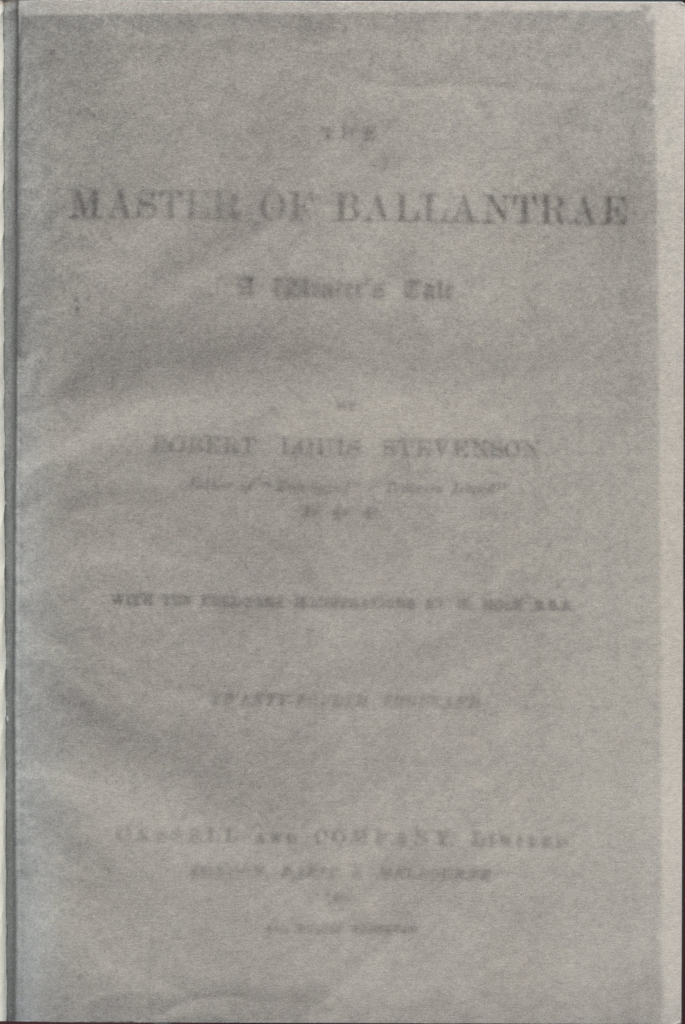 illustration from The Master of Ballantrae, The Strange Case of Dr. Jekyll and Mr. Hyde, a James Fenimore Cooper novel, and a handful of other old books are hidden behind interleaves and paperweights. Scraps of yellowed paper, perhaps once used as bookmarks, obstruct the title page of Howe’s mother’s copy of a Yeats collection. And a photo of Howe’s mother as a girl is rephotographed from an alarmingly oblique angle, its subject pushed far to one side of the frame. (It is only when we arrive at the last section of The Midnight that we face the young Mary Manning straight on, posing stiffly with pigtails and a jumprope under an ominous heading that also happens to be the title of another Stevenson novel: “Kidnapped.”) These acts of paper-concealment might be understood (correctly) as acts of mourning for the people associated with the hidden papers (principally Howe’s mother and uncle). But they are also acts of mourning for paper itself: in the shadow of the disappearing title page that opens the book, we must suspect that the hidden papers, even if revealed, would evaporate before our eyes and tell us nothing. The Midnight, securing itself against this crisis, keeps its papers hidden. And yet the photos, to me, also have something coy about them. It is tremendously difficult to say whether Howe’s concealments are a form of tact, sparing us from the unbearable knowledge of paper’s inevitable failure to bear the meanings we attribute to it, or a sly joke about the absurdity of longing for contact with pieces of paper. There is something almost too perfect, too practiced about the neat fan in which Howe spreads Mary Manning’s old bookmarks across the pages of Yeats’ Later Poems; a photographic wink and nudge insinuates that the concealment of papers is simply a game designed to reinforce the mawkish Ludditism that motivates it in the first place. The Midnight‘s photographs are at once a melancholic sigh for the inevitable demise of old papers (and those remembered on their surfaces) and a demonic, technocratic cackle at their obsolescence.
illustration from The Master of Ballantrae, The Strange Case of Dr. Jekyll and Mr. Hyde, a James Fenimore Cooper novel, and a handful of other old books are hidden behind interleaves and paperweights. Scraps of yellowed paper, perhaps once used as bookmarks, obstruct the title page of Howe’s mother’s copy of a Yeats collection. And a photo of Howe’s mother as a girl is rephotographed from an alarmingly oblique angle, its subject pushed far to one side of the frame. (It is only when we arrive at the last section of The Midnight that we face the young Mary Manning straight on, posing stiffly with pigtails and a jumprope under an ominous heading that also happens to be the title of another Stevenson novel: “Kidnapped.”) These acts of paper-concealment might be understood (correctly) as acts of mourning for the people associated with the hidden papers (principally Howe’s mother and uncle). But they are also acts of mourning for paper itself: in the shadow of the disappearing title page that opens the book, we must suspect that the hidden papers, even if revealed, would evaporate before our eyes and tell us nothing. The Midnight, securing itself against this crisis, keeps its papers hidden. And yet the photos, to me, also have something coy about them. It is tremendously difficult to say whether Howe’s concealments are a form of tact, sparing us from the unbearable knowledge of paper’s inevitable failure to bear the meanings we attribute to it, or a sly joke about the absurdity of longing for contact with pieces of paper. There is something almost too perfect, too practiced about the neat fan in which Howe spreads Mary Manning’s old bookmarks across the pages of Yeats’ Later Poems; a photographic wink and nudge insinuates that the concealment of papers is simply a game designed to reinforce the mawkish Ludditism that motivates it in the first place. The Midnight‘s photographs are at once a melancholic sigh for the inevitable demise of old papers (and those remembered on their surfaces) and a demonic, technocratic cackle at their obsolescence.
Reference to one last moment in Howe’s poem will clarify this point. Among the photographs of old books and pictures in The Midnight is a reproduction of a table from an eighteenth-century etymological dictionary comparing the “English, Saxon, Greek, and Hebrew” alphabets, with the printed characters arranged in neat rows and columns. Howe titles this plate “Curtain.” If the printed word is a curtain, what’s behind the curtain? Derrida’s infamous answer, at least towards the beginning of his career, was: nothing. Howe, I think, isn’t so sure, but yet remains enthralled by the curtain-like qualities of paper (and especially print), by paper’s tendency to recuse itself from the scenes of communication that it makes possible. The crisis that looms over The Midnight — a crisis that never arrives, but also never stops threatening to arrive — is also the lure that seduces the poem and thus keeps it in motion: the impending realization that papers, like people, always recede from our attempts to contact them. That is, the realization that all papers are interleaves.
I have been trying to demonstrate that Baum’s and Howe’s paper-poems (strange phrase — as if there were any other kind) are powerful because they are caught between two forms of aesthetic compulsion: between the logic within which paper sacrifices itself to become pure medium, and the nostalgia that attempts to recuperate this sacrifice — that is, a nostalgia both for the age in which paper reigned supreme and for the sacrificed body of paper itself. Baum and Howe want to be close to paper, to see its blemishes and feel its grain, but only because they are also committed to the moment at which its material particularity dissolves beneath the lambent quietude of textuality. In pursuing these apparently contradictory desires, they access, again and again, the very moment of elision that makes an entire system of communication possible — the fold or the interleaf across which impressions on the pliant surface of paper metamorphose into couriers of meaning. If we take seriously the assertion that “exile was already there in paper,” that our habitual reliance on paper renders the notion of true contact with it a fantasy, then Baum’s and Howe’s tremendous sensitivity to both the allure and futility of such fantasies allow them to transform our collective mourning for paper into something more than antiquarian nostalgia. Perhaps such poetry is only possible now that paper has become a bit less omnipresent, and thus a bit less invisible, than it once was.
This post may contain affiliate links.



